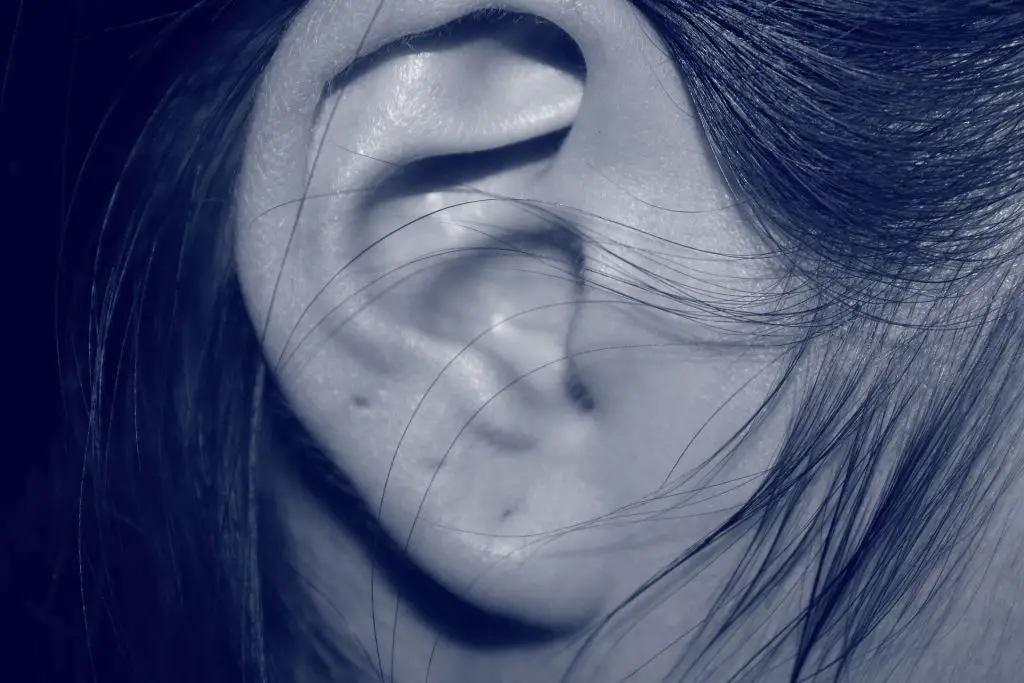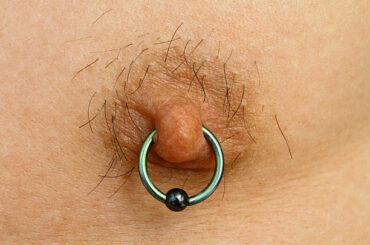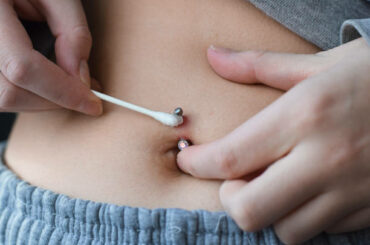Dermal piercings can be positioned on any flat area of the body. But the cheekbones, collarbones, back dimples, back of the neck, arms, hips, forearms, or chest are the most popular spots.
There are many names for dermal piercing as Micro dermal piercing, and Single point piercing.
The single-point piercing lies flat on the surface of the skin. The top of this connector, which is about six to seven millimeters long and rests on the skin’s surface, gives the impression that there are beads directly beneath the dermis. Then the jewelry is screwed at the top.
According to Jessie Darling, a professional body piercer, it is a single-point piercing that is anchored to hold firmly to the skin’s surface and has a lovely gemstone or flat piece of jewelry on top. Dermal injections are most frequently made around the eyes, collarbones, back dimples, arms, hips, or chest.
Contents
Why is dermal piercing so popular?
Because dermal piercings can be applied to virtually any flat surface of the body, it is simple to modify areas of the body that would otherwise be challenging to pierce. However, when looking for a dermal piercing, be careful, as some people mean surface piercings.

Dermal vs. surface
The main difference is that a surface piercing is a barbell with an entry and exit point that rests on the skin’s surface. It is created by pinching the skin and creating a “passageway” for the jewelry with a needle. And a barbell is inserted into the flesh so that both ends are
The Cost
The cost is Between $70 and $100, but jewelry is an extra cost.
The pain creates
The pain differs from person to person. Like any other form of body modification, dermal piercings will result in some pain. You will undoubtedly experience some discomfort, whether a pinch or something more visceral unless your pain level is extremely high.
It also largely depends on where you decide to have a dermal piercing. When selecting a position, it will be beneficial to consider the location of the nerves, the various skin thicknesses, and the proximity of the veins, as these factors can all affect how painful a piercing will be.
Healing Time
When talking about the healing time, Dermal piercings typically take one to three months to recover. How will you take care of it will determine how long it lasts.
Aftercare
Aftercare is the same for everyone. Once a day, thoroughly clean the area, let it air dry, and then cover it with a brand-new Band-Aid. Repeat seven more times. While you should be on the lookout for any indications of infection, it’s typical for a new piercing site to develop a crust and experience some minor swelling.
Common Areas for Dermal Piercings on the Body
Dermal piercings can be done anywhere flat on the body, one of their best features, as mentioned earlier. The chest, lower back, thighs, cheekbones, back of the neck, forearm, hand, and even dimples are some of the most popular places to get a dermal piercing.
Because of the nature of dermal piercings, you can probably pierce anything you can imagine. A dermal piercing can highlight a tattoo, draw attention to a favorite facial feature, or even insert permanent jewelry into your neck or wrist.
The Process
Here is how the piercer answered after asking about how it is done.
- A dermal piercing is much simpler to do than it looks. A small mark is then drawn to show where the jewelry will go after the piercer cleans your skin to prevent bacteria from entering the newly opened wound.
- Make room for the metal, and the piercer will quickly puncture the skin with a needle or skin punch.
- The piercer will then insert the jewelry’s anchor into the small hole, either by hand or with a tiny pair of forceps, until it is entirely hidden in the skin’s surface.
- Depending on the type you selected, the top is screwed on after the base has been set.
- The entire procedure only takes a few seconds; a skilled piercer will likely spend longer sterilizing than actually performing the piercing.
Side effects
It is also good to know about the side effects of dermal piercing. Here are some details I’ve found.
Infection
Your new piercing may become infected if the healing process is not appropriately managed. Severe pain, hot-to-the-touch skin around the piercing site, yellow or green pus, significant swelling, a rash, or an offensive odor indicate something is wrong.
Not only the wound itself exhibits symptoms, but your jewelry may also move, hang or droop, or completely separate from its anchor. Be sure to visit a doctor immediately if any of these things occur to your dermal piercing to prevent the infection from worsening.
Tissue damage
If a piercing infection is not treated immediately, it could worsen. Tissue damage is the main danger, which can occur if the piercing isn’t set up correctly. A dermal piercing may embed and ultimately reject if it is too deep in the skin. On the other hand, a shallow piercing might move.
Hyper granulation
A red bump that appears around the piercing site is another potential problem. It may be brought on by too much pressure applied to the area, whether from tight jewelry, waterproof clothing, or something else. Additionally, having a foreign object inserted into your skin can cause it.
more about Granulation tissues
Scarring
If you play with or take off your jewelry during the healing process, this is another possibility. The best way to guarantee that nothing goes wrong while healing is to adhere to all instructions, maintain the wound’s cleanliness, and get pierced by a licensed expert in the first place.
How to Replace Jewelry
You are welcome to switch out the external jewelry once the piercing has healed. If you’re comfortable with the procedure, you can give it a shot yourself.
- Before drying your piercing, thoroughly wash your hands and the piercing with antibacterial soap and saline solution, respectively.
- Never force the jewelry top to come off; unscrew it counterclockwise.

- Stop the process if you encounter any opposition.
- Clean the area once more before screwing your new jewelry on in a clockwise direction.
- It is advised to have your piercer change the jewelry if it is difficult to insert or unsure that you are doing it correctly. This will ensure that the procedure is done securely and safely.
Dermal Piercing Removal
A dermal piercing can be removed or retired using one of two procedures. The first method involves having a piercer gently massage the piercing site to remove the anchor from beneath the skin. Once it is free, the piercer can pull it out by twisting the anchor until the skin is broken.
This procedure is typically saved for more recent piercings. Depending on the size of the jewelry, the piercer may use a scalpel or tweezers to make a tiny incision and pull out stubborn or older piercings from the skin. Professionals may use anesthetics to lessen the discomfort, but if the skin needs to be cut open to remove the dermal piercing, you should anticipate that it will leave a scar.

Now you know all the good and bad in Dermal piercing. Now it is your chance to choose whether to do it or not. Cheers!
Read More:
The Powerful Art of Prince Albert piercing style for teenagers above 18





